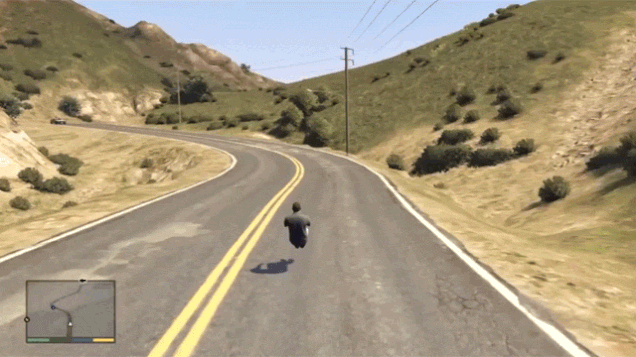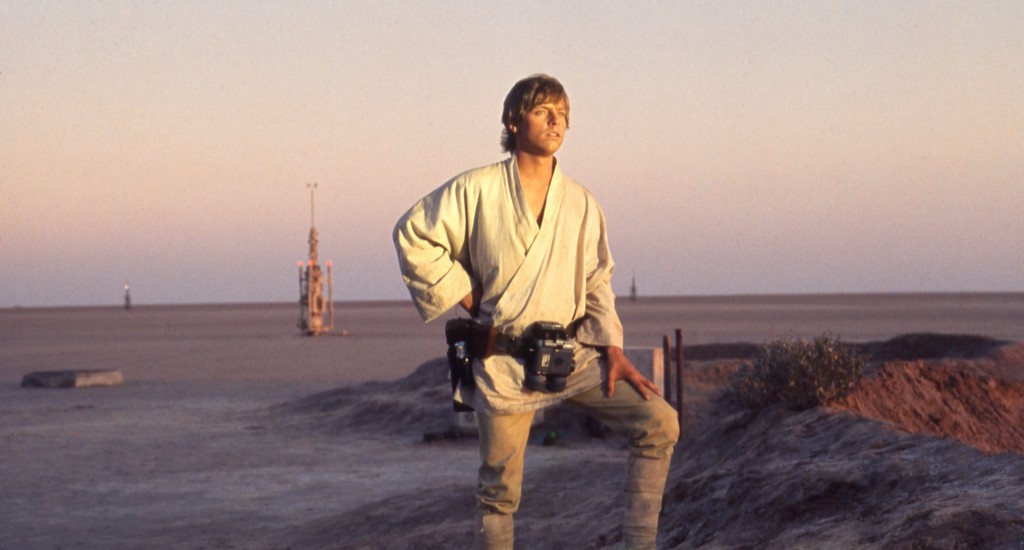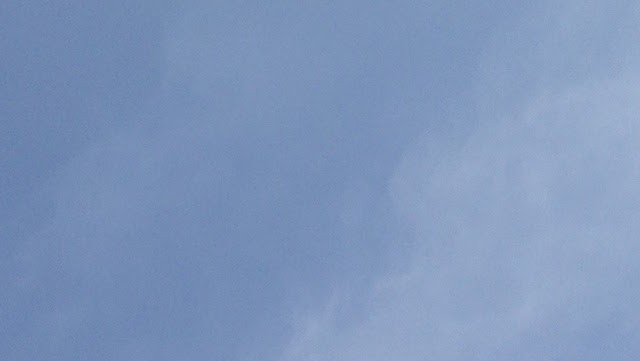The Top 5 Memorable Meals of 2015

These are the 5 dishes of 2015 that I haven’t forgotten about yet. They’re the tastes that I ate with the least grudging indifference and that left me some sort of memory, mostly one suffused with guilt or self-loathing. Maybe next year I should look to more progressive diners for guidance, but then again, it’s just food, give me a goddamn break. You eat it to shut your stomach up and you hope you it doesn’t kill you because there’s doody on it or whatever, the end. Anyway, the winners are:
Everything bagel at Black Seed
Ugh, I try not to eat carbs because gross, but I will totally bring a bunch of bagels to the office on the theory that if everyone else looks all bloated and puff-faced I can feel much better about myself by comparison. Still, if you wait on line as long as they make you wait on the line at Black Seed for their tiny Canadian impersonations of New York’s greatest culinary contribution to the field of breakfast bread, you are going to be hungry as fuck and not a little pissed off when you finally emerge three hours later with your bag of bagels. And hungry as fuck + pissed off is the precise formula to make even the most carb-averse orthorexic bite into a bagel and chew on its glutenous bounty. You know what? These are pretty good.
Two cough drops, Hoyt-Schermerhorn stop
I found these in my coat pocket the first time it got cold enough this year to pull it back out from the closet. Because last winter seemed like it was never going to end I didn’t have a chance to get the coat cleaned, so I know these are definitely from late 2014/early 2015 at the oldest. Don’t judge me, you’ve done worse. Anyway, I was standing on a subway platform waiting for a train and these were exactly what I needed at the moment. If this winter is bad I’m going to seed all my outerwear with mentholated treats for the future.
Kellogg’s® Frosted Strawberry Pop-Tarts® at the Awl offices
Someone in our office bought a shitload of these before deciding that he was going to go on one of those fad diets that everybody swears by for the first six weeks because almost every diet is amazing the first six weeks but then people sort of slink away from because you get so goddamned exhausted of only eating, say, beets, tuna fish and tiny hot dogs that you want to kill yourself and anyone else around you, plus your body gets wise to the tricks and starts to hoard whatever terrible calories you give it. Anyway, this colleague’s entry into restrictive consumption left a bunch of these chemistry experiments just sitting around in the office, waiting for the right moment when my energy was low to whisper, “You haven’t had me in over 25 years. Imagine what delicious nostalgia I’m flavored with! My silver paper contains all sorts of processed delights!” I tried like hell to resist, but I give blood every eight weeks and one time right after a donation when my will was weakened I somehow convinced myself that I needed the sugar to survive. These were gross, I think, but I ate them both so quickly that I can’t say with any degree of certainty, so on the list they go.
Green juice at, I don’t know, every fucking corner in Manhattan below 14th Street has at least one juice place on it now, this was one of the newer ones
2015 was the year I spent eleven dollars on a bottle of something that in any other circumstances would be a salad, and not even the kind of salad I would order. On the one hand, yes, dropping double digits on a small bottle of anything without alcohol in it makes me feel ashamed enough of myself as a man that when they hand you your change they should also give you a small hammer with which to crush your own testicles in acknowledgment of your surrendering up your masculinity for all future circumstances, but on the other hand I am no longer afraid to die because once you hear yourself saying things like, “I wish the cucumber wasn’t so overpowering, it really obscures the notes of kale,” there is no turning back, and it’s hard to put a price on that freedom, really. Although $11 does seem kind of high, if you’re doing a per-ounce analysis.
L-train churro
Look, sometimes you’re STARVING and you don’t know when you’re going to eat next and cough drops are not going to cut it. I have zero regrets about this.
Photo: Shutterstock.com
Ratatat, "Pricks Of Brightness"
What’s going on here? I don’t know. It’s puzzling and strange and none of it means anything in the end. It’s a lot like life, I guess. The best you can do is try to enjoy.
Surgical Supplies

New York City officials continue to struggle ineptly with the decisions about if, and how, they should regulate Uber, according to the Wall Street Journal:
City Hall is working to avoid a fight with the ride-hailing company, which spent millions of dollars this year to beat back a proposal by Mayor Bill de Blasio it argued would hinder their growth. Whether city officials will try to regulate surge pricing still isn’t clear. A spokesman for Mr. de Blasio said the administration’s priorities are “expanding accessibility for the disabled, securing support for public transit, protecting drivers and passengers, and managing congestion.” Uber’s government-affairs team, in conversations with New York City Council members and others, has focused its attention on any restrictions on the company’s surge pricing. “That seemed to be the one thing they were really concerned about,” said a council member who spoke to Uber executives.
Given Uber’s extraordinarily transparent sense of self-interest, the easy, natural inclination is to intensely scrutinize whatever it is openly “really concerned about.” But, despite nearly universal loathing of surge pricing by almost everyone, from Uber’s most fervent superusers to occasional riders, it is precisely what least needs additional regulation, which is to say that it does not need to be further regulated at all. (An agreement with the attorney general already caps surge pricing whenever there is an “abnormal disruption of the market,” like a natural disaster or state of emergency.)
As explained previously, surge pricing is literally what makes Uber work in its current form. It only goes into effect when there aren’t enough drivers to meet demand; it both incentivizes more drivers to hit the road, increasing supply, and discourages riders to take a trip, decreasing demand, until supply and demand are restored to equilibrium. This is the only law that Uber truly cares about, and right now, without its ruthless implementation through surge pricing, a car would probably not magically appear in front of the bar to retrieve your lifeless body at 1AM on Saturday night less than five minutes after you opened the app.
More broadly, everything that Uber is working on right now as it moves toward becoming something that might be more accurately described as privatized mass transit will effectively eliminate surge pricing anyway as the company is better able to meet demand without pushing it down or increasing the supply of drivers. (Think about it this way: Uber neither wants to turn riders away nor pay more drivers more money; it wants the maximum number of passengers carried by the minimum number of drivers for the lowest possible price. Uber hates surge pricing almost as much as you do.) UberPool and its more recent, bus-like spinoff, UberHOP, recently announced in Seattle, allow one driver to ferry multiple passengers simultaneously (up to five in UberHOP) with minimal time gaps between each ride. How innovative! How efficient! How cheap.
The components of the Uber apparatus that need thoughtful regulation — let’s leave aside labor here!!!! — are exactly the ones that are most complex and defy easy rule-making. Like, in the interest of reducing the number of cars on the road, maybe there should be a set number of Uber-affiliated vehicles (in which case, surge pricing would be extremely necessary to ensure that the service continues to function!). Or maybe there shouldn’t be a cap at all, or not in certain areas anyway, because some subway lines are already at or very near capacity. Maybe the city could study it.
Regardless, if the city were to be seduced into the idea that surge pricing is an issue to latch onto because the people who complain about it tend to be vocal and tech-savvy and relatively well-off — like the people who banded together to scuttle the city’s previous attempt to come down on Uber — it should recognize that the ones who protest the loudest are the people who use Uber the most. And who could be a worse judge of externalities? They already have their transit solution.
New York City, December 14, 2015

★★ The higher the blinds rose, the less they revealed, as the buildings faded up into fog. The wetness on the air at school dropoff was almost a drizzle. Steam and incinerator smoke wafted sideways, going nowhere, more gray on the gray. The fog released the building tops near at hand but held on to the ones at Columbus Circle. Cigarette smoke stayed around the sidewalk, and lunch cart smells carried to the next block. In the early afternoon that was now midafternoon, there was suddenly color in the drab stone and brick outside. The sky was blue. Even after the light had left the street, there were little bright shreds of cloud moving overhead. By full darkness, though, sheets of brown had moved back overhead and a few drops of drizzle were coming — followed, at dinnertime, by the slosh of full rain hitting the windows. The night air indoors was stifling.
Star Lords
by James Douglas

Several weeks ago, when the Walt Disney Company released the first full trailer for The Force Awakens, the advertisement received a hundred and twenty-eight million global views within the first twenty-four hours. That’s not quite record breaking, but it’s a strong indication of the grip that the almost forty-year-old Star Wars franchise still exerts on contemporary audiences. Of those millions of viewers, one was Facebook founder and CEO Mark Zuckerberg, who, in the trailer’s comment thread on the official Star Wars Facebook page, wrote, “This looks amazing. I love Star Wars.” (Over eleven thousand people liked his comment.) Two minutes later, whichever Disney social media employee was staffing the page at that time replied: “We know.”
This convergence of Zuckerberg and Star Wars was inevitable, since the franchise seems to exert a special influence on Silicon Valley tech titans, and the culture they propagate. In theNew Yorker’s profile of Facebook board member and venture capitalist Marc Andreessen, one of the few childhood details that writer Tad Friend is able to extract from his subject is the image of the young Andreessen swaddled in a puffy coat watching Star Wars in an unheated local theatre that doubled as a fertilizer depot. George Packer’s New Yorker profile of Peter Thiel (an early Facebook investor) reveals that the venture capitalist’s favorite film was Star Wars, that the current headquarters of his hedge fund Clarium Capital Management reside on the grounds of the San Francisco headquarters of Lucasfilm, and that “its first floor is decorated with statuary of Darth Vader and Yoda.”
Star Wars’ unique grip on the Silicon Valley tech industry can be seen most clearly in that industry’s adoption of narrative principles popularised by George Lucas as the framework by which its economic pursuits are conceptualised. In planning the narratives of the original Star Wars trilogy in the late seventies and early eighties, Lucas was influenced by the theories of comparative mythologist Joseph Campbell, who, in his book The Hero with a Thousand Faces, drew on studies in world mythology (as well as the psychoanalytic theories of Freud and Jung) to posit an archetypal mythic structure that springs from a universal psychological source and so inheres in stories across the globe.
The correspondence between Campbell’s “monomyth” and the plot details of the original Star Wars trilogy are now well known: “A hero [Luke Skywalker] ventures forth from the world of common day [humdrum desert planet Tatooine] into a region of supernatural wonder [a galaxy far, far away]: fabulous forces are there encountered and a decisive victory is won: the hero comes back from this mysterious adventure with the power [the Force] to bestow boons on his fellow man.” The “boon,” in Campbell’s analysis, typically involves some sort of radical renewal in the social order. This “Hero’s Journey” narrative, post Star Wars, is, increasingly, the means by which tech titan biographies are received and structured.
The high water mark of this tendency is the sanctification of Steve Jobs in the wake of his death in 2011, when the Apple CEO was memorialized in grandly heroic terms by no less than George Lucas himself, who explicitly reconstituted the details of Jobs’ biography into the monomyth in a sidebar in a Wired magazine remembrance of Jobs’ life, “The Hero’s Journey.” The crucial stages are the expulsion from Apple in the eighties, and the subsequent failure of the NeXT computer (“a sort of purgatory”), before Jobs’ triumphant return: “That’s when his story really became the hero’s journey,” Lucas wrote. Ed Catmull, current president of Pixar and Walt Disney Animation Studios (and former employee of both Jobs and Lucas) has a similar view of Jobs’ life, in which his exile from Apple also constitutes a trial in “the wilderness.”
This heroic-CEO narrative is not simply a descriptive move — a fantasy told by and to capitalists in order to bolster their self-image or reputation — it’s also a prescriptive formula: something expected of new generations of tech aspirants. In his Andreessen profile, Tad Friend expends considerable effort outlining a16z’s vision of the heroic expectations (and biographical load) an entrepreneur must shoulder in order to be eligible for funding:
A great V.C. keeps his ears pricked for a disturbing story with the elements of a fairy tale. This tale begins in another age (which happens to be the future), and features a lowborn hero who knows a secret from his hardscrabble experience. The hero encounters royalty (the V.C.s) who test him, and he harnesses magic (technology) to prevail. The tale ends in heaping treasure chests for all, borne home on the unicorn’s back.
The Jobsian return-from-exile move is now a recurring feature in industry news, with Steve Huffman resuming leadership at Reddit, Mark Pincus returning to Zynga, and Jack Dorsey riding in from the wilderness to rein in Twitter. No one is louder in proclaiming the heroic identity of tech founders and entrepreneurs than Lucasfilm neighbour Peter Thiel, who, in a quite bizarre 2012 lecture at Stanford University, mounted an extended comparison between founder-types (who are apparently gifted with “extreme” qualities and biographical trajectories) and divine sacrificial figures out of mythology. Dorsey, in Thiel’s analysis, seems to have been long destined for greatness, thanks to his “nose ring,” “unkempt hair,” and “nerdy tattoo.”
As might be expected, Thiel’s own ambitions as a venture capitalist have a decidedly heroic bent. In a 2009 essay for the libertarian publication Cato Unbound, he claimed that purveyors of technology have a mythic responsibility to guard against political encroachments on freedom (constituted largely as the free market). “The fate of our world may depend on the effort of a single person who builds or propagates the machinery of freedom that makes the world safe for capitalism,” he wrote, in an unmistakably Campbellian narrative sketch. His investment projects have included a now-defunct “seasteading” enterprise, which planned to develop a manmade island nation where inventors and entrepreneurs could pursue their god-like whims without the handicap of government regulation. Other Valley figures, like former Andreessen Horowitz partner Balaji Srinivasan, have likewise advocated for an “exit” from centralised governance into tech-run territory.
When pondering the inspirations and intellectual sources of this particular strain of techno-libertarianism, it’s helpful to remember that Lucas’ original Star Wars trilogy is ultimately about a bunch of scrappy individualists who fight against heavy-handed, centralized governance. The history of the tech industry can, in a way, be traced by its inspiration taken from — and the adoption of — the idealist nostrums of traditional science fiction, like artificial intelligence, virtual reality, and extended lifespans. The Verge recently published a feature by Awl pal Elmo Keep on transhumanism — of which Thiel, naturally, is an associate — that pays particular attention to the genealogy of the movement’s precepts from ancient mythology through early twentieth-century science fiction. Keep’s piece focuses on Zoltan Istvan, a forty-two-year-old San Franciscan mounting a campaign for President on a transhumanist platform. If the allure of science fiction (or simply mythological) narratives can exert this kind of inspirational influence on modern technological development, then it seems inevitable that its political dimensions would be carried along with it.
The notion that Star Wars is an intellectual and emotional lodestar to Valley types might simply be an airy claim, but Star Wars’ parent company Lucasfilm Ltd is, in many notable respects, a Bay Area tech enterprise in itself, rooted deep within Valley industry and culture. Although it was founded in San Rafael as a simple film production entity in 1971 — shortly after the release of Lucas’ first film THX 1138 — the business expanded into hardware and software research and development, and eventually came to produce and market innovative film production technologies, including an early non-linear editing system (called EditDroid, and later sold to Avid), as well as pioneering video games, like the proto-virtual reality online role-playing game Habitat. In Droidmaker: George Lucas and the Digital Revolution, Michael Rubin, a former employee of Lucasfilm subsidiary The Droid Works, claims that Lucas “holds a central role in the invention and dissemination of digital media.” Much of that influence is thanks to his Computer Division, an ambitious research outfit that included the graphic imaging team that was bought by Steve Jobs and became Pixar. Rubin writes, “Before he assembled the team that would become the Lucasfilm Computer Division, there had been only disparate research about computers in their application to entertainment.”
Today, Lucasfilm’s most prominent properties are the Skywalker Ranch, in the North Bay Area’s Marin County, and the Letterman Digital and New Media Arts Centre, in the Presidio, San Francisco (where Thiel’s offices are also located). Its employees occasionally trade in their roles for positions within more traditional Bay Area businesses: Steve Arnold, a former general manager of LucasArts and developer of Habitat, went on to co-found the venture capital firm Polaris Partners (which also has offices in the Presidio). In April, three former Lucasfilm workers, including a one-time CTO, were hired to run a content development wing of the virtual reality company Jaunt Studios. Lucasfilm’s personal and geographic enmeshment with the Bay Area tech industry at a local level undoubtedly gives a boost to that industry’s wholesale adoption of the Campbellian lessons of Star Wars. If the quintessential tech figure, like Peter Thiel and his ilk, grew up dreaming of beingLuke Skywalker, then Silicon Valley offers an arena in which to ratify this ambition, one uniquely charged by the presence of the company that popularised and prospered from this fantasy.
But Lucasfilm’s effects on narrative conceptualisation are not limited to the Valley. In the wake of its box office success, the original Star Wars came to be seen as a perspicuous example of the commercial potential of Campbell’s theories, thanks in part to screenwriting gurus like Disney story consultant Christopher Vogler, who, in the mid-eighties, circulated a seven-page memo titled “A Practical Guide to Joseph Campbell’s The Hero with a Thousand Faces,” which summarized key stages in Campbell’s monomyth structure by reference to narrative incidents from Star Wars. Vogler’s bosses at Disney — and in his own account, executives across Hollywood — were especially receptive. (In a 2013 essay for Slate, film critic Peter Sudermanasked whether Blake Snyder’s Save the Cat — a screenwriting guide that breaks down a Campbellian three-act structure into a programmatic list of fifteen story beats — might be promoting a formula that is “killing movies,” outlining the structural repetition among recent blockbusters like Battleship, Star Trek Into Darkness, and Pixar’s Monsters University.) Pixar, after breaking from Lucasfilm and venturing into film production by partnering with Disney, established a firm commercial record with a narrative method clearly indebted to Campbellian strictures, while its key creative personnel, including Ed Catmull, and filmmaker John Lasseter have ascended to high positions within Disney Animation Studios (where John Lasseter is chief creative officer). With its 2012 sale, for a hair over $4 billion, Lucasfilm joined its former research division employees under the Walt Disney Company roof, along with Marvel Entertainment. This corporate consolidation of several major heroic entertainment properties (and the industrial mimicry their successes engender) cannot be reassuring to any person who believes, as Joseph Campbell did, that mythic narratives have a social function, and social effects.
Campbell’s Faces, first published in 1949, concludes with the observation that the technological advances of modernity have been accompanied by a corresponding personal alienation not present in pre-technological civilisations, meaning that modern mythology must now fulfill a different social need.“The hero deed to be wrought is not today what it was in the century of Galileo,” he writes:
Where then there was darkness, now there is light; but also, where light was, there now is darkness. The modern hero-deed must be that of questing to bring to light again the lost Atlantis of the coordinated soul. Obviously, this work cannot be wrought by turning back, or away, from what has been accomplished by the modern revolution; for the problem is nothing if not that of rendering the modern world spiritually significant — or rather, nothing if not that of making it possible for men and women to come to full human maturity through the conditions of contemporary life.
It’s tempting to wonder what Campbell would make of the mytho-techno-libertarianism currently suffusing the atmosphere around Silicon Valley, given that “the conditions of contemporary life” seems to be just what its proponents would very much like to disrupt — and “turning back,” on a political and social level, is what some Valley thinkers like to do best. Elon Musk, a co-founder of PayPal with Thiel (and, apparently, an inspiration for Marvel Studio’s filmic conceptualisation of their superhero Iron Man/Tony Stark, to whom he is routinely compared), is known for advocating a colonisation of Mars, while blithely suggesting that the cost in human life will be comparable to the colonisation of the New World. Thiel’s views have been linked with the so-called neo-reactionists, some of whom diagnose the cause of American and western political problems as “chronic kinglessness.” Consistent with the oppositional affect of this “Dark Enlightenment” movement, its followers sometimes label valued thinkers “Sith Lords.” The movement’s image seems to vacillate between Empire and Rebellion, which might suggest something about the political confusion the emotional allure of Star Wars has wrought.
A social program, of sorts, seems to be incrementally emerging out of Silicon Valley, one that looks back to a medieval past when heroes could arise to roam the earth, and miracles were still possible (but never regulated). Thiel, for one, believes that startups are basically monarchies already. It’s not difficult to extrapolate from this view a clue as to why companies like Uber place an inordinate emphasis on the individual laborer (or “entrepreneur”) over collective organization — that the sharing economy model reifies a kind of modern serfdom is, by this line of thought, natural and right. After all, what is a king without a peasant? Or, what use is a hero if there’s no one who needs to be saved?
The ambitious venture capitalist — raised on a diet of Luke Skywalker, Buzz, Woody, and Iron Man — can’t make do with the ersatz-Tatooine of Burning Man as their yearly taste of freedom. A broader social canvas is waiting, and though the era of the feudal kingdom may seem a long time ago, and far, far away, modern capital has long been adept in its collapsing of time and distance. Rodger Hodge’s recent feature on online shoe store Zappos in the New Republic suggests there’s already plenty of reason to believe that contemporary digital companies are reorganizing themselves into insular communities, with founder-CEOs taking lordly positions at their head.
A recent Wired article on the revitalization of Star Wars heralded by the release of The Force Awakens noted that Disney’s plans for the franchise include a new film “every year for as long as people will buy tickets.” The title of the piece was “You Won’t Live To See the Final Star Wars Movie,” but your children’s children might, if the preferences of their generation’s god-king CEOs are anything like ours. Aspiring heroes, clutching their science fiction fantasies to their hearts, are proliferating out of the tech industry, each with a boon to offer. In their hands, a social renewal is just as likely to be a regression.
The Besnard Lakes, "The Plain Moon"
I have mixed feelings about the moon, but when something sounds good I will put up with a whole lot regardless of its name. This is one of those cases. Enjoy.
New York City, December 13, 2015

★ The sky wasn’t not blue, though there were other colors smeared into it for sure. It was mild enough to open the windows to vent the smell of bacon and to get only one complaint from the children about the draft. Again in the forecourt the starlings were singing their bright invaders’ song, as they feasted on the little fruits in a near-leafless tree. Up on the fountain terrace, framed by shrubs with holiday lights in them, roses were stretching up and blooming. The haze sparkled like a glaze of ice ought to have. People were out in short sleeves. Damp spots had soaked through the summer-checked woven shirt of a man riding slowly on a Citi Bike. The sky lost still more blueness, but clear syrupy rays still came through it up the avenue, from the low white field of glare corresponding to the sun, powdery as Turkish delight.
The Home
by Jordan Hall

See the child. He is pale, thin, halfseen in his diminution. His hair flashes white, betrays his Aryan blood.
He is alone, the parents gone in the morning. It is nothing to him. He revels in their tedious wake. Eats milk and cream. Breaks and steals property and rubs himself in oils strange. He sleeps ’til near the sun’s noonhigh meridian, his whited hair splintered and splayed like some infernal broomhead. At night he carnivals with dervish fervor, watches plays of mindless violence. He is wild and drunken, bestial, howling into the darkling primordial. There is no echo. He is a changeling.
It is not long before the robbers come. The leader is squat and wears a gold tooth. Bestride him is another with crazed eyes and a figure gaunt like a starved and preyless mantis. Their coats are ashen and their boots trudge black against the snow. The squat signals to the redclay hovel before them, assuming its vacancy. This’s it, he says. The mantis nods. It is the hermitage of the kid.
Their first tries are stillborn. The kid has drawn the curtains and mounted straw men in the windowframes, at night animating their persons with guyropes so that shades dance in the illumined curtain. Some days later he lights firebits in a scullery bowl to ape the scream of gunfire. Each time the gangsome slanks off until at last they bivouac and learn his orphanage but do not learn his taste for violence. He hears their plans.
Come back tonight round nine. Kids’s afraid of the dark.
They are apocalyptically stupid.
The evening sun drops, blossoms blood into the gloaming. He goes to church, believes in nothing, only meets a man with a shovel. This same man now begins to descant on about his son who has prodigalized himself or something, and here his granddaughter sings in the choir but the kid cannot be said to give a damn. The choir is a bansheeing racket. All he now cares for is what use he can make of this old anchorite and though he had once feared the man with the shovel he now knows his error. The man with the shovel will deliver him in the end. All history swells to it.
He returns to the hovel and draws his plans and executes them. When he is finished he is hungry like a dog after congress. He eats melted cheese.
At the foretold hour the clock tolls and the robbers beset him with reckless punctuality, careening toward their final hidden doom like wraiths returning to the locus of their death. Gladeyed and grinfaced they taunt him.
We know ye in there and that ye all alone.
Its Santy Claus and his little elf.
The kid shoots the one in the left interior adductor a half inch below the genitals. The other in the foreplate of his skull. He uses pellets because he is a troll.
With haste the mantis makes for the basement but the kid has iced the entrystep and he slips, each stair cracking his bones like pool balls until he heels into the door. Inside is darkness. He reaches for a light but catches on some unseen contrapment. A rattle issues from above. He looks up and a flatiron swats across his face and he drops to the floor. When he wakes he tries the basement stair but finds it tarred and he must barefoot it and steps down on a casing nail that splits wide the small of his foot and the blood and the tar mix and the tar sieves into the wound.
Opposite his partner’s position the squat has received like treatment. The kid’s heated the front doorknob and when the squat reaches for it he burns his hand, cries and plunges his open fist into the snowdrift. The snow hisses and the scorched flesh of his palm remains strewn in the snow when he pulls back. The wound is purplish and charred bleeding and all about his hand bubbles like the exploding heads of miniature jellyfish. Far worse yet and branded in stark relief upon his palm is the letter M from which he discerns his doom, the mark of Mephistopheles and stigmata of the Antichrist. He shall find no deliverance amongst such dread company. He opens the backdoor and a blowtorch sets fire to his scalp.
At length the robbers convene in the front vestibule with the feet of the mantis sharded in ornamenting and the squat halfplumaged like some molested pigeon. The kid stands above them on the landing. He is laughing. He was baptized in blood and blood alone and now stands half finished conducting the selfsame sacrament upon these wretched initiates.
Ye guys give up? he queries.
Or ye thirsty fer more?
They are parched. They sprint up the stair like giddy Sunday schoolers to the pulpit, bludgeoned by loaded cans of paint swung from the handrail upon their skulls. Each by each they fall and lay crucified against the wooden slats, hand to hand, married in their mutual atrocity. Again they storm the stair, this time gaining the head. They trip on a planted wire but the mantis reaches out and claws the kid’s foot. Suddenly he spies a small and hirsute fugitive meddling about the attic step which he clutches and places on his combatant’s face. The mantis shrieks and the kid flees to the attic and the spider scurries to the squat’s chest where the mantis lowers a crowbar across his heart.
The kid can smell his reckoning now. The moon is risen full. He exits the attic window across a suspended cable to a wigwam in the trees. The robbers have gained him again and attempt the crossing but the kid won’t give and exhibits a pair of hedgeshears. From what deep well was spawned this genius? Does he not mete out apposite verdicts? With the wise indifference of a middle-aged cow he cuts through the cable and the fools go tumbling downward back upon the hovel face like misstepped trapeze folk. Again the kid implores them and runs to a neighboring shanty, stealing through the basement. Inside is flooded, seems to have been flooded for all time. He runs up the stair and swings wide the door clear into the arms of his forsworn antagonists.
Heya pal!
They lift the kid by his blood-dimmed sweater and hang him on a coatrack. Madness on their faces. The mantis gone moronic. The squat’s tonsured head like some wardfled lobotomite.
What are we goin to do to em?
We goin to burn his head with a blowtorch.
Smash’n his face with an iron.
First thing I aim is to bite off each his’n fingers.
The squat grabs his hands, they are chafed to the raw and cold. The hands of some atavistic creature of darkness. He opens his mouth with the gold tooth since vanquished and draws the kid’s fingers toward his stinking maw when the man with the shovel flashes from behind and wrecks down that eponymic instrument straight upon the squat’s bald head with seraphimic fury. Again he heaves up and strikes the mantis flush like so, a prophecy consummated, the rites all ended, all time vindicated in that absolute judgment. In a moment the sheriff arrives and the robbers are packed in cars and driven off to whatever godforsaken destiny next awaits them.
The kid watches from the window and catches the squat’s eye and waves. A grin cuts across his djinnish face and he laughs. The great gloom of the world is for him an hysterical vaudeville. He laughs again. He laughs so hard he pisses himself, shits himself, his trousers are a bog teemed with alien fish and toad. He vomits from the stench. He laughs like the untold billions before him who laughed in the endless desert and from dark high places and crawling up out of seaweed water. Son of Man, child of God.
A True New York City Restaurant Fairy Tale

Once upon a time, like six years ago, there was a restaurant called Torrisi Italian Specialties, and it served miraculous turkey sandwiches for lunch and magical tasting menus for dinner for like fifty bucks or so, and it was loved throughout all the land.
People loved Torrisi’s Italian sandwiches so much that the wizards behind it, Mario Torrisi and Rich Carbone, and later, Jeff Zalaznick — who called themselves “Major Food Group” — decided that they needed to make a new shop that was totally dedicated to Italian sandwiches and more than twice as big as Torrisi, so that everybody who wanted a sandwich could get one, and they called this new sandwich shop Parm. And because Torrisi Italian Specialties didn’t have to worry about making so many sandwiches anymore, it could make dinner even fancier. And everybody loved it too.
For their next trick, the wizards decided that they would use their powers to bring back a lost cuisine from the ancient past: mid-century Italian-American red sauce. Though it drew on some dark powers — there’s always a cost to bringing things back from the dead — the spell that created Carbone was masterful. The gently rude waiters were wrapped in burgundy tuxedos designed by Zac Posen; the floor was drawn from The Godfather; and the Caesar salad was hand-tossed at your table, while the classics, “Seafood Salad, Linguini Vongole, Lobster Fra Diavola, Chicken Scarpariello and Veal Parmesan [were] elevated to a new level.” And (almost) everybody loved it too. But a few people saw the $50 Veal Parm and the $38 scampi and the $48 antipasti tasting and the $78 lobster fra diavolo and whispered, “Why so expensive?”
The wizards, realizing the scope of their new powers in a land beginning to be reshaped by the resurgent forces of Capital (which had briefly retreated just a few years earlier), conjured another restaurant shortly after Carbone, called ZZ’s Clam Bar. Inside, there were exotic potions and plates of exquisite creatures, served raw so they were still full of life. And everybody who get past the colossus standing guard outside loved it too. The people who were left outside looked over the menu, with its $20 cocktails and $95 tartare and $38 snapper and $40 langoustines whispered, a little louder this time, “Why so expensive?”
This, it turned out, was the real beginning: The wizards began unleashing their full power, and in the span of eighteen months, opened one restaurant, called Dirty French, which demonstrated their still-growing ability to warp time and space around themed menus (the restaurant takes “timeless dishes and preparations of the classic French bistro and enlivens them utilizing modern techniques and bold flavors”), and another, called Santina, inside of a beautiful glass box located under a bridge to nowhere that exerted a powerful pull on visitors from other lands. They also revealed their plans for more Parms and Carbones, to spread their Italian sandwiches and tectonic plate-sized veal parms around the world, so everyone could get a taste of their sorcery, and announced Sadelle’s, a New York bakery and deli with four kinds of everything bagels and that, every night, magically transforms “into a fantastical brasserie that is illuminated solely by candlelight.” And when Sadelle’s opened at the end of 2015, everybody pretty much still loved everything. But a few more people than before, realizing they had been charmed into purchasing $17 egg sandwiches $29 Hebrew National sandwiches, and $70 vodka carafes (or $135 Stoli Elite Carafes), asked, louder than ever, “Why so expensive?”
But no one realized quite how powerful or how dark forces around the wizards had become until, joining with a powerful troll named Aby Rosen, they conquered a strange, far away land (like fifty blocks!) known as the Four Seasons, populated entirely by a race of giants who are so magically and exceedingly wealthy that they have never asked, for any reason, “Why so expensive?”
But it turned out that remaking this far away land in their own image came at a cost even higher than they had imagined, and so the wizards asked others to pool their powers:
To perk interest and attract attention to the venture, Rosen sent out marketing materials enclosed in a marble box shaped like the famous square pool that sits inside the landmarked restaurant space.
According to several real estate executives who have been solicited or have viewed the mailer, Rosen is promising investors a 120% return before he and his partners take any proceeds and then a 40% cut of future profits. Rosen and Major Food Group would pocket the remaining 60%.
No one is quite sure how this tale ends, but probably something like, “Everybody lived happily ever after, gorging on veal parm and everything bagels and turkey sandwiches and duck l’orange, or at least everybody that could afford it, which was just a few people, but consider just how happy they were, even though nobody lived quite as happily ever after as Major Food Group.”
This tale is greatly indebted to this exceedingly thorough Grub Street timeline.
Jaco Pastorius, "Okonkole Y Trompa" (Dave Harrington edit)
On days like this it’s nice to pretend that we might not have winter ever again. So let’s just do it. There’ll be plenty of time later for nature to mock us. Meanwhile, please enjoy this remix of a classic Jaco Pastorius track from Dave Harrington’s terrific collection of year-end mixes.
